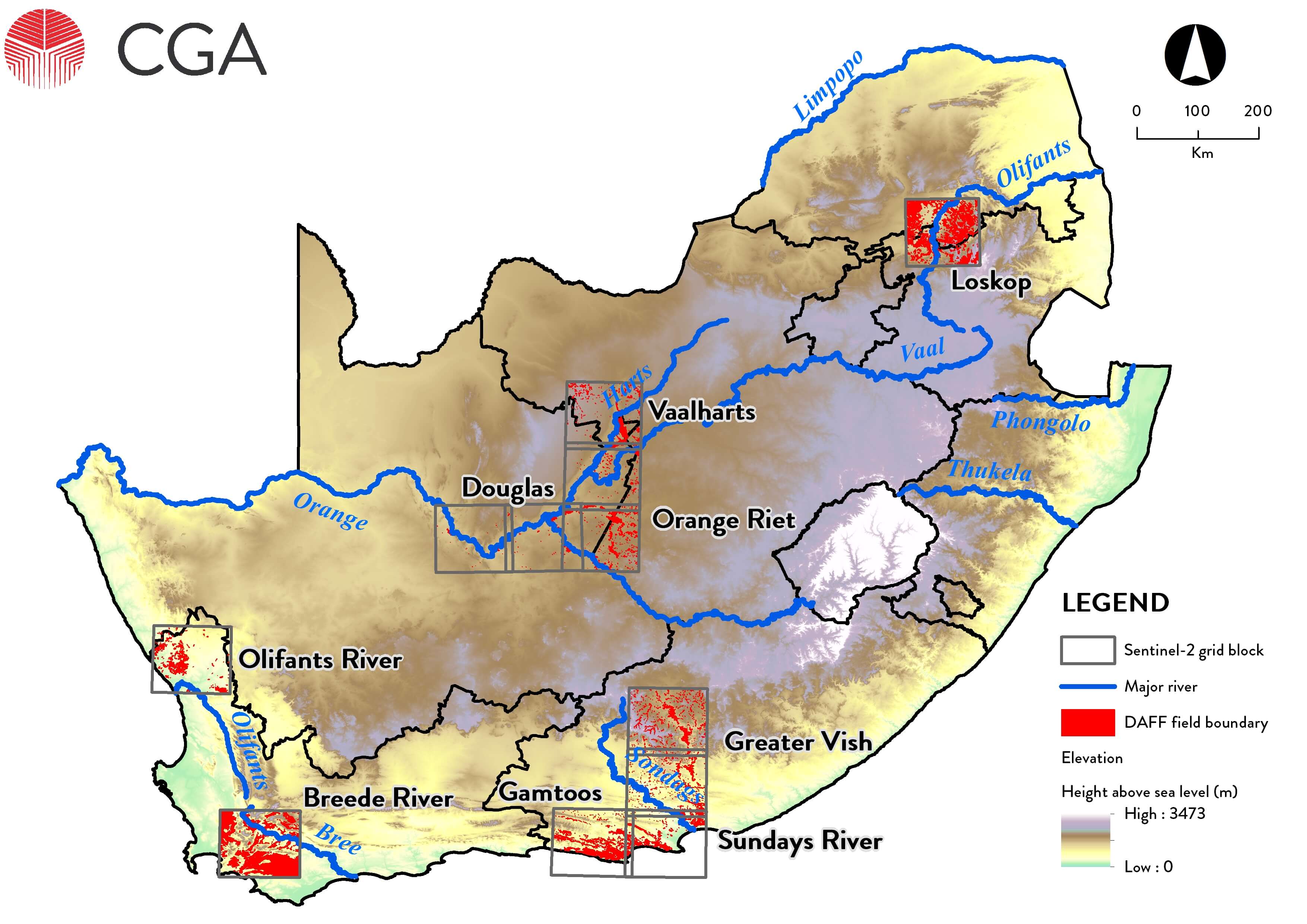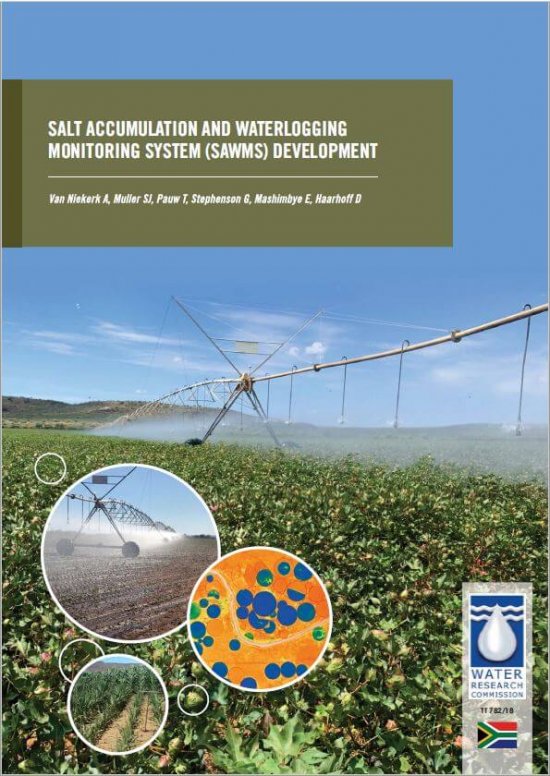The drought in South Africa in recent years has forced farmers to change their watering habits and use water more efficiently, resulting in crops being irrigated less frequently. This can lead to the accumulation of salts in soils, which can have a detrimental effect on production.
In the article Getting Ahead Of Salinization, Scientists utilise satellite images for early detection by Anna Mouton in Fresh quarterly, Professor Adriaan van Niekerk, director of the Centre for Geographical Analysis (CGA) at Stellenbosch University, discusses the impact of salt accumulation and how it can be mitigated by the early detection system that was recently implemented by the CGA. The system, called the Salt Accumulation and Waterlogging Monitoring System (SAWMS), makes use of satellite imagery to regularly (every 5 days) monitor crop growth over an extended period of time (e.g. two years) to identify areas within production units that are likely affected by salt accumulation and/or waterlogging. The Water Research Commission funded the project and the findings were published in a recent report.

Geographical distribution of the irrigation schemes and agricultural areas where the SAWMS was applied
Climate change and water shortages will increasingly threaten agriculture. Areas such as Vaalharts show that salinization can be mitigated with up-to-date monitoring allowing for more effective management. Prof. van Niekerk is confident that combatting salinization and waterlogging can be assisted using SAWMS.
To view the SAWMS please go to the website: https://sungis10.stb.sun.ac.za/sawms/


